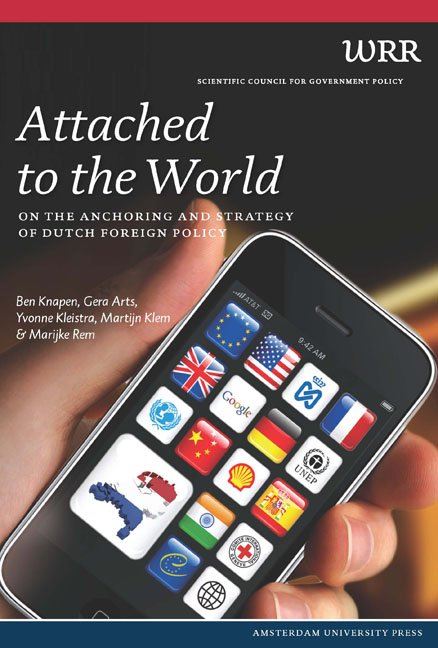Book contents
- Frontmatter
- Contents
- Summary
- Preface
- 1 Motivation and Background: An Introduction
- 2 From Fragmentation to Strategy
- 3 Europe: Arena and Link
- 4 Directing and Facilitating
- 5 Conclusions and Recommendations
- List of Abbreviations
- References
- List of Interviewees
- Appendix 1 The Interrelatedness of the Dutch EconomY
- Appendix 2 The Interrelatedness of the Netherlands With other Nations
- Appendix 3 The Dutch Network of Embassies in a Comparative Perspective
- Appendix 4 Sovereignty in Eu Member States: A Comparison
2 - From Fragmentation to Strategy
Published online by Cambridge University Press: 19 January 2021
- Frontmatter
- Contents
- Summary
- Preface
- 1 Motivation and Background: An Introduction
- 2 From Fragmentation to Strategy
- 3 Europe: Arena and Link
- 4 Directing and Facilitating
- 5 Conclusions and Recommendations
- List of Abbreviations
- References
- List of Interviewees
- Appendix 1 The Interrelatedness of the Dutch EconomY
- Appendix 2 The Interrelatedness of the Netherlands With other Nations
- Appendix 3 The Dutch Network of Embassies in a Comparative Perspective
- Appendix 4 Sovereignty in Eu Member States: A Comparison
Summary
On 28 December 1943, the then Minister of Foreign Affairs Eelco van Kleffens announced in a speech he delivered for Radio Orange that the Netherlands would be pursuing an ‘active’ foreign policy. The idea that an active approach of the Netherlands in international politics is absolutely essential for a small open society whose scope for action is co-dependent on others has been the core of Dutch foreign policy ever since. An active approach has become the trademark of the Netherlands abroad: we are represented at virtually every table and we participate in virtually everything.
The upheavals of 1989 have not changed any of this. More than ever, the Dutch government is convinced that an active foreign policy is a vital necessity for a country like the Netherlands, as witnessed, amongst other things, in many references to the government's active approach on the international stage in the Queen's speeches, government declarations, Explanatory Statements, and addresses:
“The Netherlands is largely dependent for its prosperity on the delivery of goods and services to foreign countries… In contacts with our partners and international organisations, key issues are the alleviation of poverty in the world, the sustainability of our planet, the reinforcement of human rights, and international peace and security. The efforts of the Netherlands during the past G20 and European summits must also be regarded in this perspective. … Stability, peace, and good governance are greatly aided by cooperation in international organisations, such as the European Union, NATO, and the United Nations. A well equipped security and defence organisation also makes a contribution to this” (Queen's Speech 2010).
Developments in the post-1989 world, meanwhile, have thrown up obstacles to the government. The global context in which policymaking takes place has changed to such an extent that the tried and trusted international policymaking frameworks (see Voorhoeve 1979) have become outdated. An alternative framework, at the same time, is lacking, making it increasingly difficult in practice to decide what the Dutch position should be or what role the Netherlands should play in specific cases. The choice for pursuing an active policy, therefore, often amounts to little more than an attitude of ‘if it fails to do some good, it won't do any harm’ rather than a manifestation of a goal-oriented strategy aiming to achieve a specific goal or at least bring it a little closer.
- Type
- Chapter
- Information
- Attached to the WorldOn the Anchoring and Strategy of Dutch Foreign Policy, pp. 25 - 58Publisher: Amsterdam University PressPrint publication year: 2012



